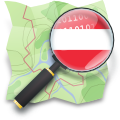Vandalismus
Dealing with vandalism in OpenStreetMap
An open map – isn’t that vulnerable to vandalism?
OpenStreetMap is an open map that anyone can contribute to. But doesn’t that inevitably lead to deliberate destruction or falsification?
Most mistakes in OSM are made unintentionally – whether through misunderstandings or lack of experience. Nevertheless, it does occasionally happen that data is intentionally deleted or corrupted. This may be limited to small areas, but there have also been larger cases.
How is vandalism prevented in OpenStreetMap?
The OpenStreetMap community has various mechanisms for detecting and correcting vandalism at an early stage:
- Community monitoring: Many mappers monitor changes in their region and ensure that no incorrect entries are created.
- Special tools for detecting suspicious changes: There are programs that automatically identify and report unusual edits.
Despite these measures, not all changes are subject to prior review – the vast majority of mappers work responsibly, and the editing process should not be made more difficult than necessary.
Should I correct vandalism myself?
If it’s a small mistake, you can fix it yourself. However, if it’s large-scale or repeated vandalism, it’s better to leave the correction to experienced mappers.
Why?
- Vandalism can be part of a larger pattern that experienced users can better recognize and comprehensively address.
- Incomplete corrections can lead to further errors and make subsequent cleanups more difficult.
- The Data Working Group (DWG) and experienced mappers have special tools to efficiently analyze and reverse all affected changes.
If you are unsure, it’s better to report the problem and leave the correction to the professionals!
What should I do if I discover vandalism?
Please do not report vandalism publicly, especially not with screenshots! This could encourage other users to do the same, making cleanup more difficult.
Step 1: Check whether the vandalism still exists
The map tiles on openstreetmap.org are not updated in real time. It is therefore possible that the problem has already been fixed, but the change is not yet visible. You can check this as follows:
- Zoom in on the affected area and right-click to open the menu.
- Select “Query Features”. If this option is not available, zoom in further.
- If the affected object no longer exists, it has probably already been corrected.
Step 2: Report vandalism
If the data is still subject to vandalism, please report it to https://community.openstreetmap.org/ or directly to the Data Working Group (DWG) by e-mail to data@osmfoundation.org.
Include as much detail as possible:
- Object ID or change set ID of the incorrect entry (you can find this using the object query or in the edit history of the card.)
- Link to the affected location on the map
- A brief description of the problem
Further information about the Data Working Group can be found at:
